Exploring Culture
In the “¿Quién es mi familia?” unit, there was a section entitled “Exploración cultural” that talks about LGBTQ+ rights and how they’re evolving within various Spanish-speaking countries. For example: Gay marriage is legal in Cuba, Chile, Argentina, Colombia, Uruguay, and Ecuador as opposed to Panama, where it is illegal. I already knew a lot of these countries were very religious, but what surprised me was the number of countries that made it legal, especially when compared to the US.
Engaging in Communities
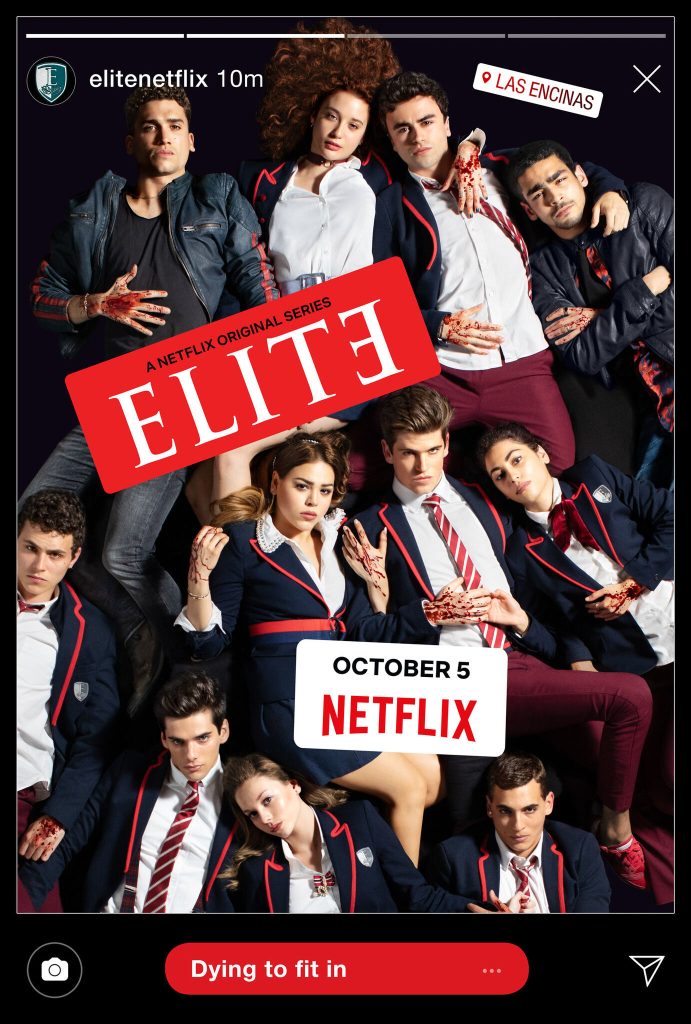
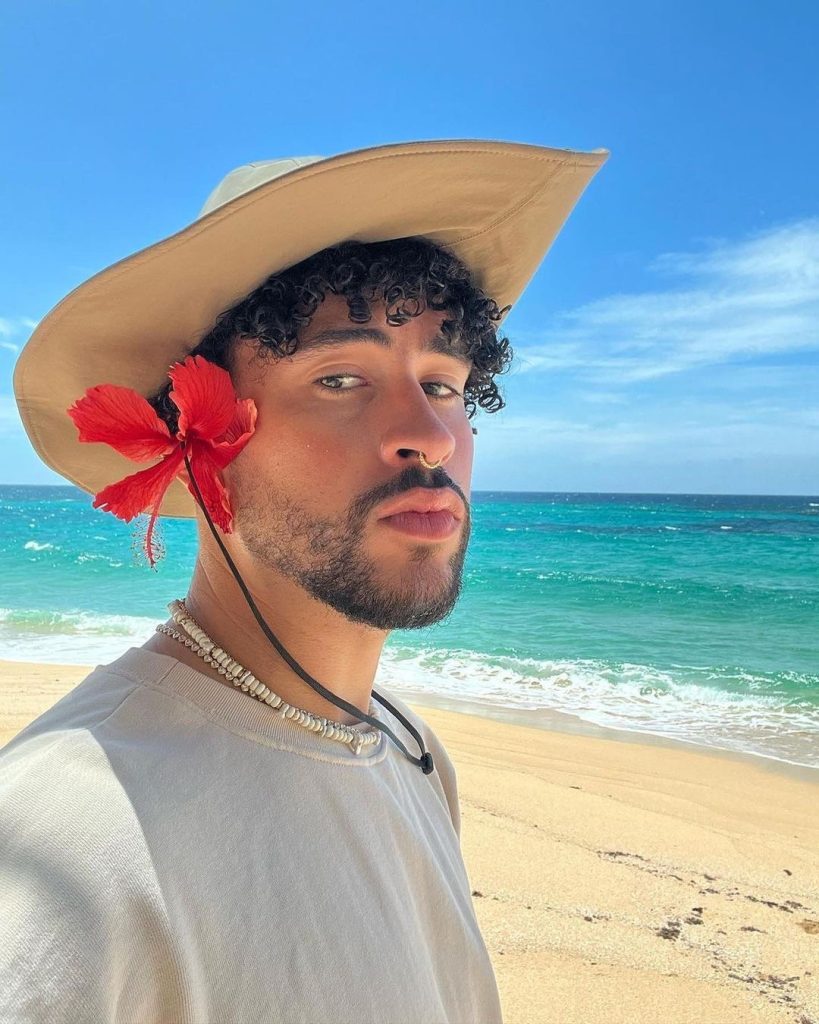
Immersing yourself in a different culture can help you gain a better understanding of perspectives and customs that differ from those that you’re familiar with. During my free time, I often watch Hispanic shows such as “Elite” and “Narcos”, as well as listen to music by Latin artists such as Bad Bunny and Maluma. These help me learn more about different phrases and dialects used in various Spanish-speaking countries that in turn, help me sound more like a native speaker.
Interpersonal Communication
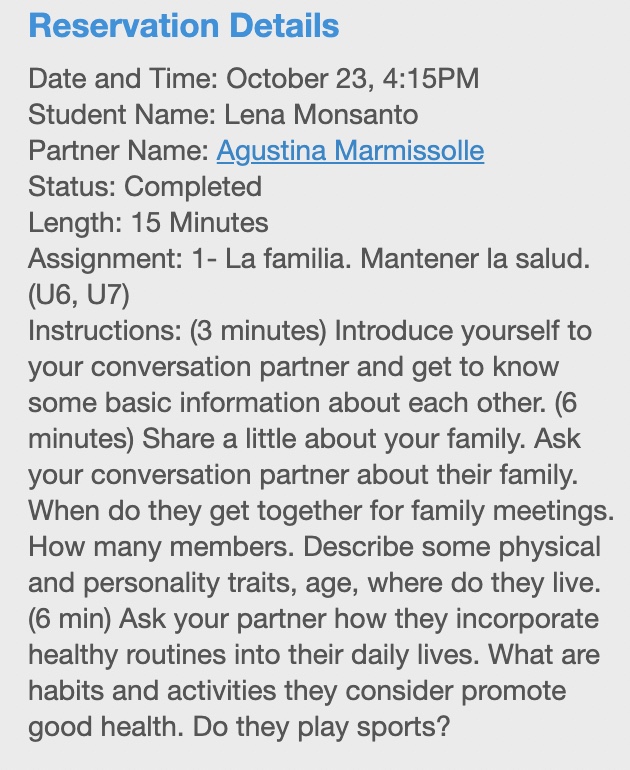
This semester, we were introduced to TalkAbroad, a website where we can have two fifteen-minute conversations with native Spanish speakers from around the world. The purpose of this was to expand upon our speaking and listening skills entirely in Spanish. With both conversations, I noticed myself forgetting basic vocabulary and stumbling over my words because of how nervous I was, not only because these were graded, but also I was put on the spot. Luckily, my partners were very understanding and even repeated their questions and spoke slowly at times. Despite the nerves, I did enjoy these conversations and learning more about different Spanish-speaking countries.
Presentational Speaking
This semester, we were tasked with creating an oral presentation where we had to talk about each of our family members. The goal of this assignment was to use adjectives to describe physical and personality traits as well as use the appropriate possessive pronouns. I enjoyed this assignment because it was a great refresher for me on how to describe others. My only challenge was mixing up the masculine and feminine endings on certain words, however that was only every so often.
Presentational Writing
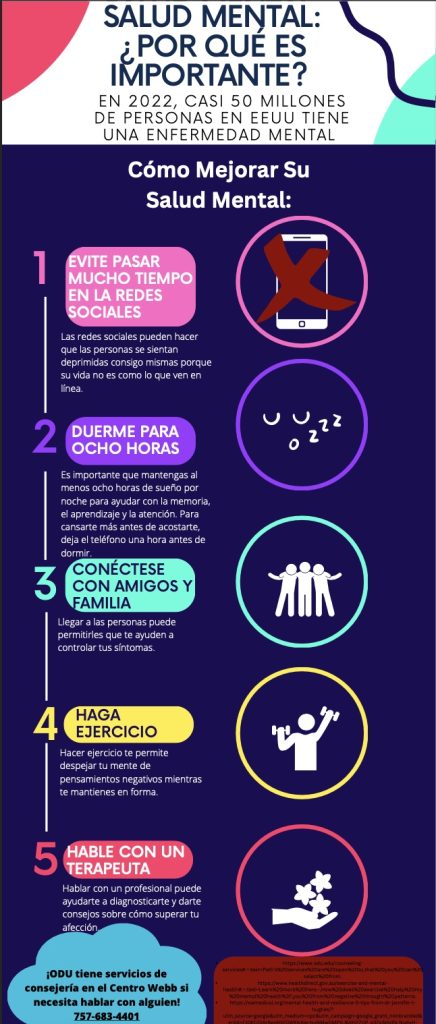
The goal of this assignment was to create an infographic telling people how they can improve either their physical or mental health, all while using affirmative commands. This particular assignment was a bit difficult for me as I did struggle a little with commands, however I’ve since gotten more comfortable using them after a bit of practice. I did enjoy creating the infographic and like how the final product came out.
Interpretive Listening
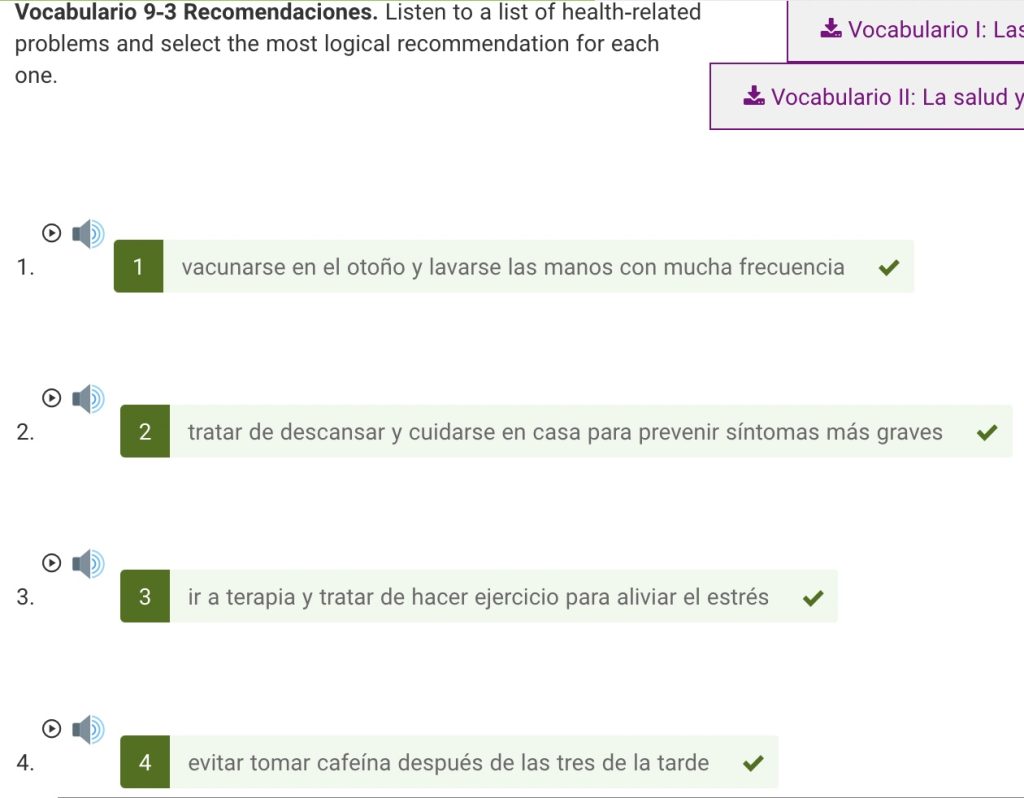
Each LingroLearning activity consists of listening questions that help immensely with conversing with native speakers. These assignments are my least favorite as I struggle to decipher words sometimes. I will say I have improved on listening activities throughout the semester, and this screenshot from unit 9 proves that. This specific assignment was to four audios regarding different health issues and match it with the most logical recommendation. Although I did have some difficulty, I am glad I’m growing as a student and working to improve myself.
Interpretive Reading
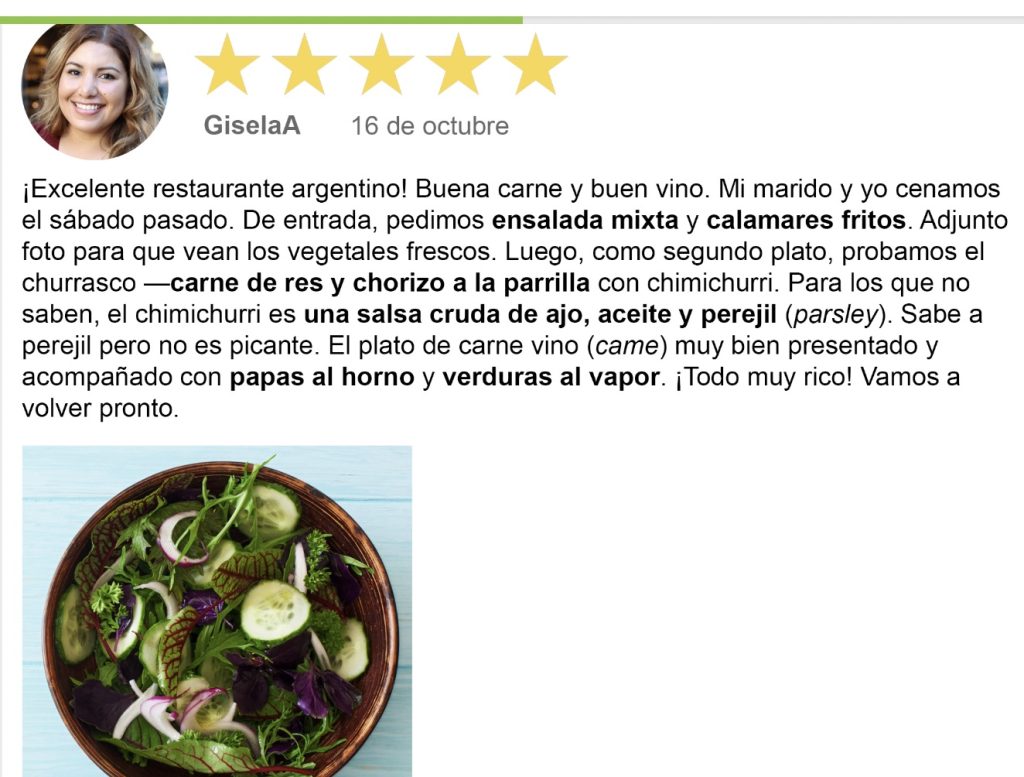
Reading assignments are one of my favorite parts about doing LingroLearning assignments. I feel that I can better understand new vocabulary this way compared to just listening. I found that this screenshot from unit 8 enjoyable because I found it easy to read and rarely had the need to look up anything. For this particular assignment, we had to read the online review and match the foods to the corresponding pictures. I already have prior knowledge on what certain foods are, but nonetheless, the “¿Que Comiste Ayer?” was my favorite unit.